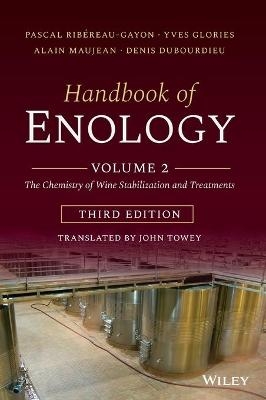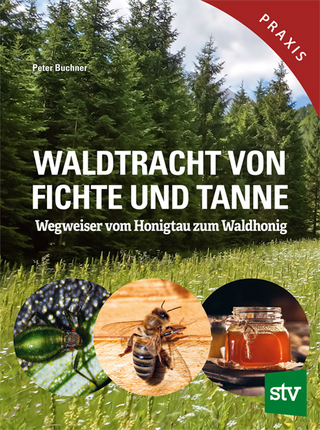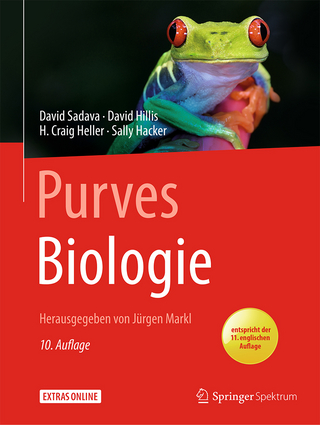
Handbook of Enology, Volume 2
Wiley-Blackwell (Verlag)
978-1-119-58776-7 (ISBN)
This third English edition of The Handbook of Enology, is an enhanced translation from the 9th French 2017 edition, and is published as a two-volume set describing aspects of winemaking using a detailed, scientific approach. The authors, who are highly-respected enologists, examine winemaking processes, theorizing what constitutes a perfect technique and the proper combination of components necessary to produce a quality vintage. They also illustrate methodologies of common problems, revealing the mechanism behind the disorder, thus enabling a diagnosis and solution.
Volume 2: The Chemistry of Wine and Stabilization and Treatments looks at the wine itself in two parts. Part One analyzes the chemical makeup of wine, including organic acids, alcoholic, volatile and phenolic compounds, carbohydrates, and aromas. Part Two describes the procedures necessary to achieve a perfect wine: the clarification processes of fining, filtering and centrifuging, stabilization, and aging.
Coverage includes: Wine chemistry; Organic acids; Alcohols and other volatile products; Carbohydrates; Dry extract and mineral matter; Nitrogen substances; Phenolic compounds; The aroma of grape varieties; The chemical nature, origin and consequences of the main organoleptic defects; Stabilization and treatment of wines; The chemical nature, origin and consequences of the main organoleptic defects; The concept of clarity and colloidal phenomena; Clarification and stabilization treatments; Clarification of wines by filtration and centrifugation; The stabilization of wines by physical processes; The aging of wines in vats and in barrels and aging phenomena.
The target audience includes advanced viticulture and enology students, professors and researchers, and practicing grape growers and vintners.
Authors: Pascal Ribereau-Gayon, Yves Glories, Alain Maujean and Denis Dubourdieu Coordinator: Philippe Darriet With contributions from Patricia Ballestra, Jean-Christophe Barbe, Marguerite Dols-Laffargue, Laurence Geny, Remy Ghidossi, Aline Lonvaud, Patrick Lucas, Axel Marchal, Isabelle Masneuf-Pomarede, Martine Mietton-Peuchot, Claudia Nioi, Alexandre Pons, Sophie Tempere, Cecile Thibon. Translator: John Towey
Foreword
Preface to the Second Edition
Preface to the First Edition
Remarks Concerning the Expression of Certain Parameters of Must and Wine Composition
Part I - Chemistry of Wine
1 Organic Acids in Wine
1.1 Introduction
1.2 The Main Organic Acids
1.3 Different Types of Acidity
1.4 The Concept of pH and Its Applications
1.5 Tartrate Precipitation Mechanism and Predicting Its Effects
1.6 Tests for Predicting Wine Stability
1.7 Preventing Tartrate Precipitation
References
2 Alcohols and Other Volatile Compounds
2.1 Ethanol
2.2 Other Simple Alcohols
2.3 Polyols
2.4 Aliphatic Fatty Acids
2.5 Esters
2.6 Miscellaneous Compounds
References
3 Carbohydrates
3.1 Introduction
3.2 Glucose and Fructose
3.3 Other Sugars
3.4 Chemical Properties of Sugars
3.5 Sugar Derivatives
3.6 Pectic Substances in Grapes
3.7 Exocellular Polysaccharides from Microorganisms
References
4 Dry Extract and Minerals
4.1 Introduction
4.2 Dry Extract
4.3 Ash
4.4 Inorganic Anions
4.5 Inorganic Cations
4.6 Iron and the Iron Casse Mechanism
4.7 Copper and Copper Casse
4.8 Heavy Metals
References
5 Nitrogen Compounds
5.1 Introduction
5.2 The Various Forms of Nitrogen
5.3 Amino Acids
5.4 Other Forms of Nitrogen
5.5 Proteins and Protein Haze
5.6 Preventing Protein Haze References
References
6 Phenolic Compounds
6.1 Introduction
6.2 Types of Substances
6.3 Chemical Properties of Anthocyanins and Tannins
6.4 Anthocyanin and Tannin Assays-Sensory Properties
6.5 Evolution of Anthocyanins and Tannins as Grapes Ripen
6.6 Extracting Tannins and Anthocyanins during Winemaking
6.7 Chemical Reactions Occurring during Barrel and Bottle Aging
6.8 Precipitation of Coloring Matter (Color Stability)
6.9 Origin of the Color of White Wines
References
7 Varietal Aroma
7.1 The General Concept of Varietal Aroma
7.2 Terpene Compounds
7.3 C13-Norisoprenoid Derivatives
7.4 Methoxypyrazines
7.5 Sulfur Compounds with a Thiol Function
7.6 Furanones
7.7 Lactones
7.8 Aromas of American Species
References
Part II - Wine Stabilization and Treatments
8 Main Sensory Defects: Chemical Nature, Origins and Consequences
8.1 Introduction
8.2 Oxidative Defects
8.3 Effect of Various Forms of Bacterial Spoilage
8.4 Microbiological Origin and Properties of Volatile Phenols
8.5 Cork Taint
8.6 Sulfur Derivatives and Reduction Odors
8.7 Premature Aging of White Wine Aroma
8.8 Sensory Defects Associated with Grapes Affected by Various Types of Rot
8.9 Miscellaneous Defects
References
9 The Concept of Clarity and Colloidal Phenomena
9.1 Clarity and Stability
9.2 The Colloidal State
9.3 Colloid Reactivity
9.4 Protective Colloids and Gum Arabic Treatment
References
10 Clarification and Stabilization Treatments: Fining Wine
10.1 Treating Wine
10.2 Sedimentation of Particles in Suspension
10.3 Racking: Role and Techniques
10.4 Theory of Protein Fining
10.5 Tannin-Protein Interactions
10.6 Effect of Fining on the Organoleptic Quality of Wine: Concept of Overfining
10.7 Products Used in Fining
10.8 Fining Techniques
10.9 Bentonite Treatment
10.10 Miscellaneous Clarification Treatments
References
11 Clarifying Wine by Filtration and Centrifugation
11.1 Principles of Filtration
11.2 Laws of Filtration
11.3 Methods for Assessing Clarification Quality
11.4 Filtration Equipment and Filter Aids
11.5 How Filter Layers Function
11.6 Filtration through Diatomaceous Earth (or Kieselguhr) Precoats
11.7 Filtration through Cellulose-Based Filter Pads
11.8 Membrane Filtration
11.9 Crossflow Filtration
11.10 Effect of Filtration on the Composition and Organoleptic Character of Wine
11.11 Centrifugation
References
12 Stabilizing Wine by Physical and Physicochemical Processes
12.1 Introduction
12.2 Heat Stabilization
12.3 Wine Stabilization via Physical Processes under Development
12.4 Cold Stabilization
12.5 Ion Exchangers
12.6 Electrodialysis Applications in Winemaking
References
13 Aging Red Wines in Tanks and Barrels: Phenomena Occurring During Aging
13.1 Oxidation-Reduction Phenomena
13.2 Oxidation-Reduction Potential
13.3 Influence of Various Factors on Oxidation-Reduction Potential
13.4 Development of the Phenolic Characteristics of Red Wines (Color and Flavor) during Aging
13.5 Evolution of Aromatic Thiol Composition in Red Wines during Aging
13.6 Bottle Aging of Red Wines
13.7 Cellar Practices
13.8 Barrel Aging of Red Wines
13.9 Effect of Barrel Type on the Development of Red Wine
13.10 Constraints and Risks of Barrel Aging
References
Index
| Erscheinungsdatum | 23.04.2021 |
|---|---|
| Übersetzer | John Towey |
| Verlagsort | Hoboken |
| Sprache | englisch |
| Maße | 178 x 254 mm |
| Gewicht | 2792 g |
| Einbandart | gebunden |
| Themenwelt | Naturwissenschaften ► Biologie |
| Naturwissenschaften ► Chemie | |
| Technik | |
| ISBN-10 | 1-119-58776-X / 111958776X |
| ISBN-13 | 978-1-119-58776-7 / 9781119587767 |
| Zustand | Neuware |
| Informationen gemäß Produktsicherheitsverordnung (GPSR) | |
| Haben Sie eine Frage zum Produkt? |
aus dem Bereich


